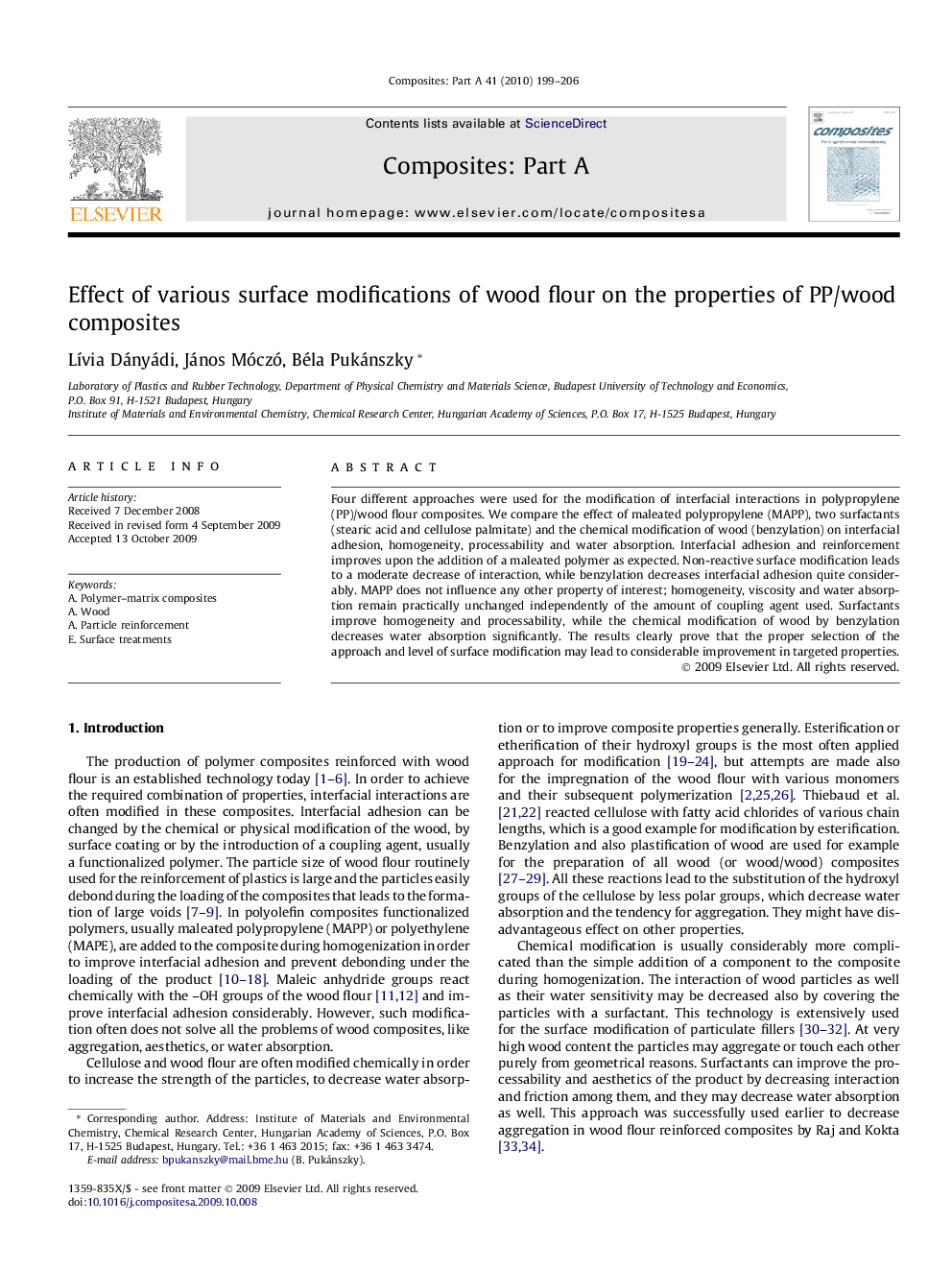| Article ID | Journal | Published Year | Pages | File Type |
|---|---|---|---|---|
| 1467161 | Composites Part A: Applied Science and Manufacturing | 2010 | 8 Pages |
Four different approaches were used for the modification of interfacial interactions in polypropylene (PP)/wood flour composites. We compare the effect of maleated polypropylene (MAPP), two surfactants (stearic acid and cellulose palmitate) and the chemical modification of wood (benzylation) on interfacial adhesion, homogeneity, processability and water absorption. Interfacial adhesion and reinforcement improves upon the addition of a maleated polymer as expected. Non-reactive surface modification leads to a moderate decrease of interaction, while benzylation decreases interfacial adhesion quite considerably. MAPP does not influence any other property of interest; homogeneity, viscosity and water absorption remain practically unchanged independently of the amount of coupling agent used. Surfactants improve homogeneity and processability, while the chemical modification of wood by benzylation decreases water absorption significantly. The results clearly prove that the proper selection of the approach and level of surface modification may lead to considerable improvement in targeted properties.
